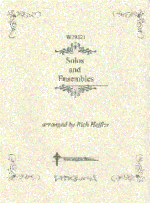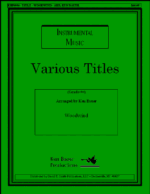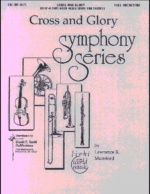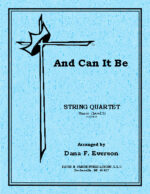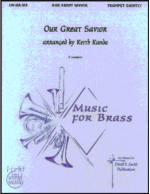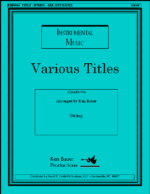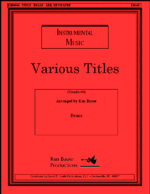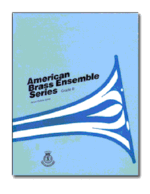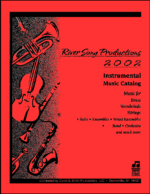-
-
-
-
-
-
-
-
-
-
-
And Can It Be
$6.00This duet is scored for trumpet, trombone, and piano with optional horn and baritone parts. The melody is passed back and forth between the two duet lines and modulates between several keys, giving over to a stirring ending.
-
-
Come, Thou Long Expected Jesus
$45.00Flute 1,2, oboe, bssn.,clarinet, trumpet 1,2, horn 1,2, trombone 1,2, tuba, violin 1, 2, viola,
Cello, string bass, percussion (3 players): synth-string red. -
And Can It Be
$10.00This is a traditional string quartet with optional third violin. The melodic material is passed through the various ensemble parts and the textures vary greatly with even a brief fughetta section.
-
-
-
-
Come Thou Long Expected Jesus
$15.00This traditional Christmas/Advent hymn combines beautiful harmonies, inspiring melodic and rhythmic movement and a spirited ending. A string quintet that may be expanded to a sextet by adding the double bass …
String Quintet (3 Vln, Vla, Cel) -
Come Thou Long Expected Jesus
$15.00This traditional Christmas/Advent hymn combines beautiful harmonies, inspiring melodic and rhythmic movement and a spirited ending. Brass Quintet (2-Trp, Hrn, Tbn, Tba – optional A. Sx. For Hrn)
-
Christ The Lord Is Risen Today
$19.95A majestic Easter fanfare introduction leads into a legato call and response section, then, with independent lines, the melody continues until the final burst of spirit as a finale.
Brass Quintet (2-Trp, Hrn, Tbn, Tba – optional A. Sx. For Hrn) -
Come Thou Long Expected Jesus
$15.00This traditional Christmas/Advent hymn combines beautiful harmonies, inspiring melodic and rhythmic movement and a spirited ending.
Saxophone Quintet (2 A Sx, 2 T Sx, Bari Sx) -

